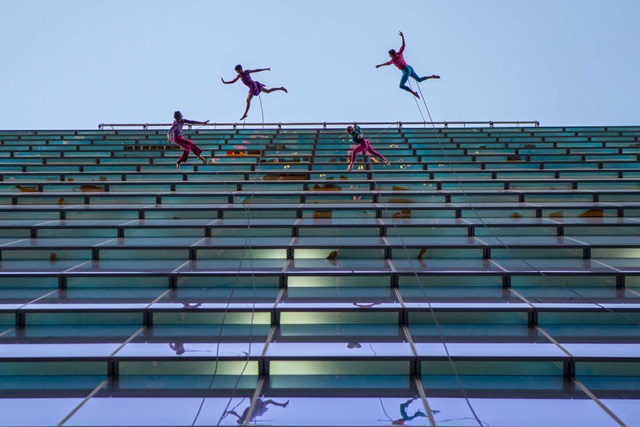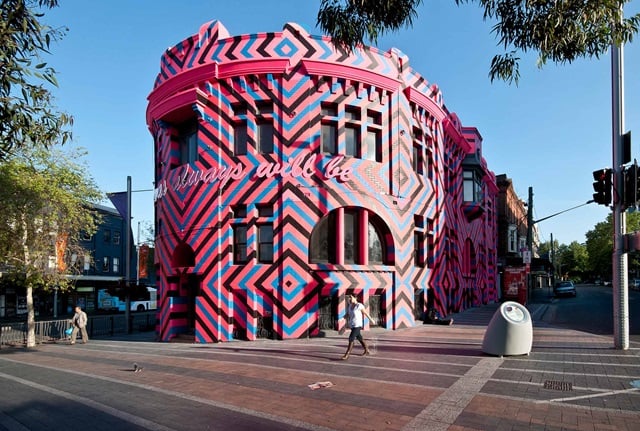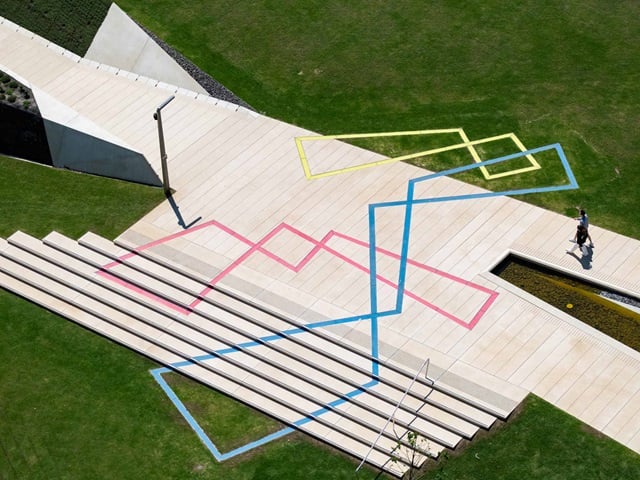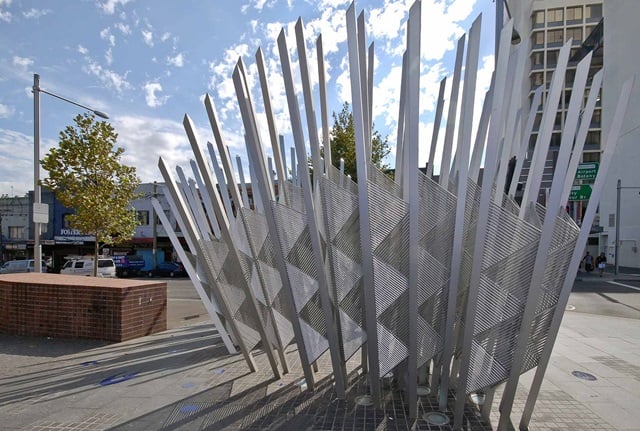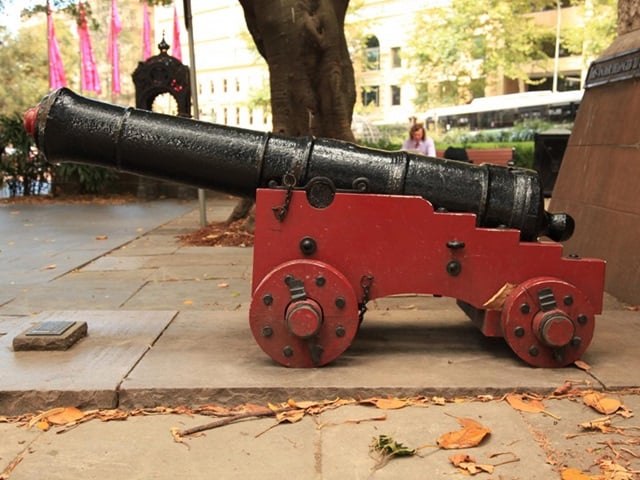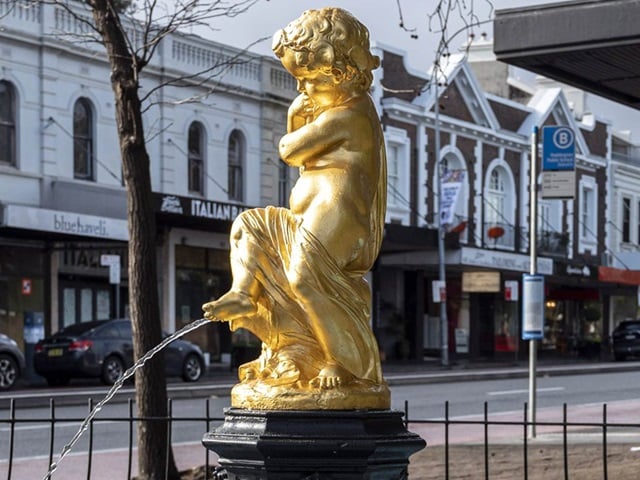


An alternative to how historical personalities are represented in public art.
Artist: Fintan Magee
Artwork description
Patyegarang was a young Aboriginal woman living in the Sydney region when the British invaded in 1788. She played a significant role in early contact between Aboriginal and British people at Tar-Ra (Dawes Point).
She was a teacher to William Dawes, an engineer and astronomer. Together in 1790-91 they created what is now considered the first written account of the Sydney Aboriginal language.
Patyegarang’s story only came to light in 1792 when Dawes’ language notebooks were revealed in London. She is not mentioned in any of the other historical accounts of the First Fleet, so the little we know about her life is based on what can be understood, or inferred, from Dawes’ notebooks.
Artist Fintan Magee has painted the models using a bevelled glass effect that obscures the historical figures, presenting them as abstract, forgotten or distant.
The work aims to provide an alternative to how historical figures are represented in public art.
